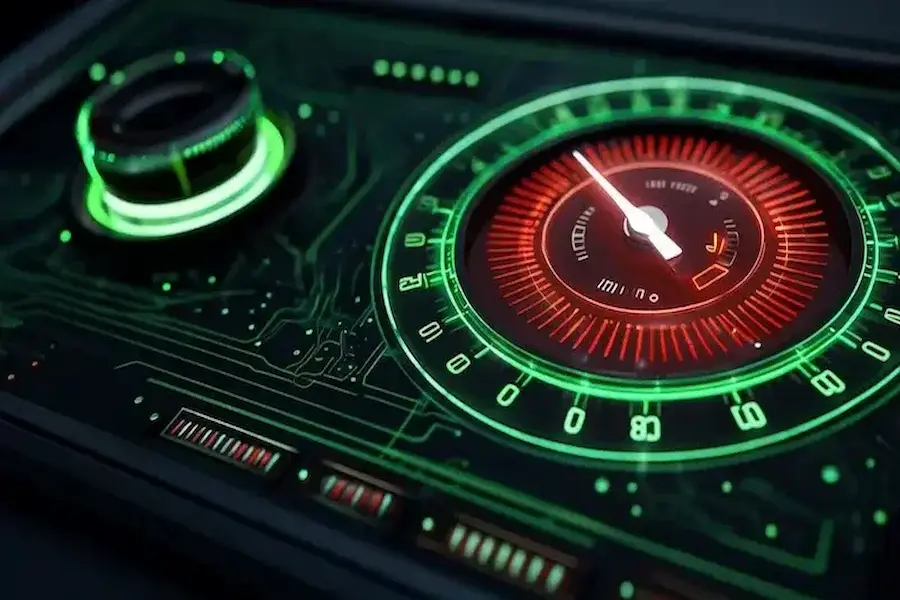Understanding Kalibraatio: A Key to Precision, Efficiency, and Quality
Kalibraatio (Calibration) is not just a routine process it’s the cornerstone of operational accuracy and product consistency across various industries. Whether you’re in pharmaceutical production, automotive engineering, or aerospace manufacturing, calibration ensures that every tool, machine, and system functions with the precision required for successful operations. This article explores why kalibraatio is indispensable and how it drives industries toward higher standards of quality, efficiency, and safety.
What is Kalibraatio?
Kalibraatio, or calibration, is the process of configuring and verifying the accuracy of measurement instruments by comparing them to a traceable standard. This ensures that equipment measures accurately and reliably, preventing errors that could compromise product quality and safety.
For instance, in pharmaceutical production, temperature calibration is essential for storing temperature-sensitive drugs like vaccines. A miscalibrated thermometer could cause a whole batch of vaccines to become ineffective, resulting in significant financial loss and potential harm to public health.
Calibration is critical because instruments are subject to wear and tear, environmental changes, and operational stress, which can cause them to drift from their calibrated state. Regular kalibraatio resets these instruments, ensuring that they remain precise, reliable, and aligned with industry standards.
Why Should You Care About Kalibraatio?
In industries such as food production, healthcare, and automotive engineering, calibration is essential for ensuring safety, reliability, and consistency. Calibration directly impacts:
- Product Quality: Ensures that products meet specifications and avoid defects.
- Safety: Helps prevent incidents due to faulty measurements.
- Regulatory Compliance: Ensures companies comply with industry regulations like ISO 17025 and FDA standards.
Example: In the automotive industry, miscalibrated sensors in autonomous vehicles can result in safety failures, leading to accidents and liability concerns. Proper kalibraatio ensures that safety systems, like automatic braking, function as intended, reducing risk.
Ignoring kalibraatio can lead to financial loss, regulatory fines, and reputational damage. Even small calibration errors, like incorrect pressure readings or temperature fluctuations, can lead to significant operational disruptions, product recalls, and safety hazards.
Key Characteristics of Kalibraatio
Successful kalibraatio depends on the following four characteristics that define its effectiveness:
- Accuracy: Calibration ensures that measurements are as close to the true value as possible, meeting the required tolerances.
- Consistency: Regular calibration checks ensure that instruments maintain measurement accuracy over time.
- Traceability: Calibration links instruments to certified standards, ensuring the reliability and comparability of results.
- Reproducibility: A calibrated instrument consistently provides the same results under similar conditions, maintaining long-term reliability.
Importance of Kalibraatio in Industrial Settings
In industries with little room for error, kalibraatio is non-negotiable. Without it, critical systems may fail, data could be misinterpreted, and product quality could degrade. For example, in pharmaceutical manufacturing, miscalibrated temperature sensors could ruin an entire batch of drugs or vaccines, leading to financial losses and potential public health risks.
1. Regulatory Compliance
Sectors like healthcare, food production, and automotive manufacturing require regular calibration to comply with industry regulations like ISO 17025, ISO 9001, and FDA CFR Part 11. Non-compliance can lead to fines, shutdowns, and damage to reputation.
Example: “In the food industry, temperature calibration is essential for ensuring that cooking equipment functions as required. Miscalibrated temperature sensors could lead to undercooked food, posing health risks.”
2. Operational Efficiency
Miscalibrated equipment doesn’t just affect accuracy; it can also cause inefficiencies. For example, a miscalibrated gauge can result in machines operating at suboptimal speeds, leading to increased costs and reduced throughput. Regular calibration ensures that equipment runs at peak performance, reducing downtime and boosting overall productivity.
Does Your Team Maintain a Regular Calibration Schedule?
An efficient operation depends on keeping machines and equipment in top condition. Regular recalibration ensures that no instrument falls out of specification, preventing unexpected breakdowns that could disrupt production timelines.
3. Product Quality
Calibration directly impacts product quality. Whether manufacturing medical devices, automobile parts, or pharmaceutical products, small calibration errors can lead to faulty outputs. A miscalibrated sensor in chemical concentration measurement could lead to dangerous results in pharmaceutical manufacturing, or spoil food products, posing serious health risks.
Kalibraatio ensures that all measurements made during production are accurate, preventing costly quality issues and safeguarding consumer health.
4. Data Integrity
In scientific research or engineering, accurate measurements are critical. A small deviation in data from improperly calibrated instruments can result in flawed results. This could lead to incorrect research conclusions, design flaws, and manufacturing defects. Calibration protects the integrity of your data, ensuring that results are reliable, actionable, and trustworthy.
Calibration Standards and Guidelines
Compliance with global calibration standards ensures uniformity and credibility across industries. Here are some of the most widely accepted standards:
- ISO/IEC 17025: Specifies general requirements for calibration and testing laboratories.
- ISO 9001: Focuses on quality management systems.
- ANSI/NCSL Z540.3: U.S. standard outlining measurement uncertainty principles.
- FDA CFR Part 11: Addresses electronic records in calibration processes, especially in pharmaceuticals and biotech industries.
Following these standards ensures that calibration processes are consistent, accurate, and compliant with legal and regulatory requirements.
Are You Following the Right Guidelines?
When calibration processes align with these internationally recognized standards, you can be confident that your operations are both efficient and compliant.
Types of Kalibraatio
Kalibraatio applies to various types of measurements, ensuring that each instrument operates with high accuracy:
1. Temperature Calibration
Used in thermometers, sensors, and heating systems for industries like pharmaceuticals, food production, and climate-sensitive research. Temperature calibration ensures devices measure correctly, maintaining the right conditions for product quality or scientific validity.
2. Pressure Calibration
Used for pressure gauges, meters, and transducers in industries like oil, gas, and pharmaceuticals. Pressure calibration ensures accurate measurements, preventing system failures and safety hazards.
3. Electrical Calibration
For instruments such as voltmeters, ammeters, and oscilloscopes. Ensures the accurate measurement of voltage, current, and resistance, preventing errors that could lead to unsafe conditions.
4. Mass Calibration
For balances and load cells used in pharmaceuticals, chemicals, and food packaging. Ensures that scales measure weights accurately, maintaining consistency and meeting regulatory standards.
5. Dimensional Calibration
For micrometers, calipers, and gauges used in precision engineering and manufacturing to ensure that measurements meet certified standards, which is crucial for producing parts with tight tolerances.
6. Flow Calibration
Ensures accuracy in flow meters used in industries like chemical processing, water treatment, and oil refining. Accurate flow data is vital for safe and efficient operations.
Calibration Management Software (CMS)
Calibration Management Software (CMS) automates scheduling, documentation, and traceability tasks, improving operational efficiency and ensuring compliance. Some popular CMS options include:
- GAGEtrak: Ideal for regulated environments, this software helps track calibration schedules and ensure compliance.
- Beamex LOGiCAL: A cloud-based CMS offering paperless calibration, integrating with process instruments and field communicators.
- GageList: Designed for small to mid-sized businesses, this CMS supports ISO compliance and bulk asset imports.
- Calibrite: Ideal for lab environments, this CMS provides advanced analytics and sensor integration.
- WIKA-Cal: Specialized in pressure and temperature calibration, WIKA-Cal allows for custom certificate generation.
These tools help businesses automate recalibration schedules, track instrument histories, and ensure compliance with industry regulations.
Common Calibration Mistakes
Even with the best intentions, businesses often make mistakes that can compromise calibration accuracy. Here are some common errors:
- Overlooking Recalibration Schedules: Instruments naturally drift over time. Skipping recalibration can lead to inaccurate readings.
- Using Inadequate Standards: Calibration should always be performed using high-accuracy standards. Substandard reference materials compromise accuracy.
- Poor Documentation Practices: Missing or incomplete calibration records can result in compliance failures during audits.
- Environmental Negligence: Environmental factors like temperature and humidity can affect calibration results. Instruments should be calibrated in stable conditions.
The Process of Kalibraatio
Understanding the calibration process is essential for streamlining operations and minimizing errors. The process includes:
- Preparation: Ensure the instrument is clean and functional.
- Standard Selection: Use a traceable reference standard to ensure accuracy.
- Measurement: Compare the instrument’s measurements against the standard.
- Adjustment: Align the instrument with the standard if necessary.
- Documentation: Log the results, including date, technician name, and instrument ID.
- Labeling: Tag the instrument with calibration date, next due date, and Pass/Fail results.
Conclusion
Kalibraatio is much more than a technical formality it’s the bedrock of quality, safety, and efficiency across industries. Whether ensuring regulatory compliance, improving operational efficiency, or maintaining product quality, calibration ensures that everything works as it should. By staying proactive, adopting the right tools, and avoiding common mistakes, you can ensure your instruments remain accurate and your operations stay compliant.
Is your calibration process up to industry standards? Adjusting your approach today will set you on the path to improved performance tomorrow.
FAQS
1. What is Kalibraatio (Calibration)?
Kalibraatio is the process of adjusting instruments to ensure accurate and reliable measurements.
2. Why is Kalibraatio important?
It ensures product quality, safety, operational efficiency, and regulatory compliance.
3. Which industries require Kalibraatio?
Industries such as pharmaceuticals, automotive, food production, healthcare, and aerospace rely on calibration.
4. How often should calibration be done?
Calibration frequency depends on equipment usage, environmental conditions, and industry standards.
5. What are common calibration mistakes?
Overlooking recalibration schedules, using inadequate standards, and poor documentation.
6. What is Calibration Management Software (CMS)?
CMS automates calibration scheduling, tracking, and documentation to reduce errors and ensure compliance.
7. What are the benefits of proper Kalibraatio?
It enhances accuracy, ensures compliance, improves efficiency, and prevents costly errors.
READ ALSO:Crypto30x.com Catfish: Fraud Warning and Red Flags You Must Know

